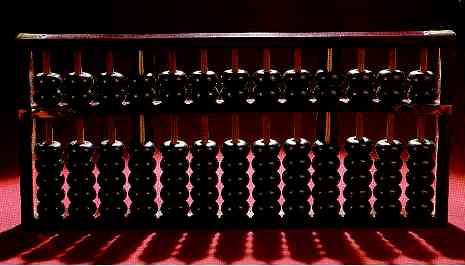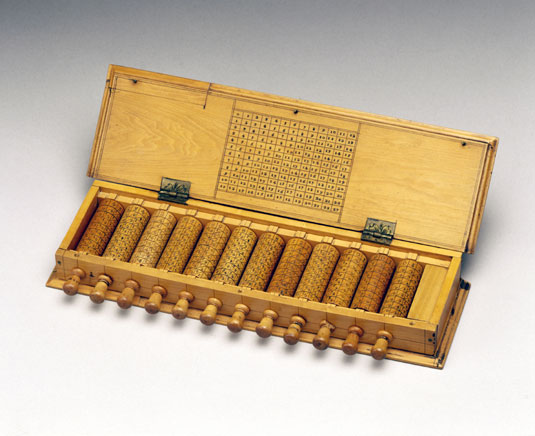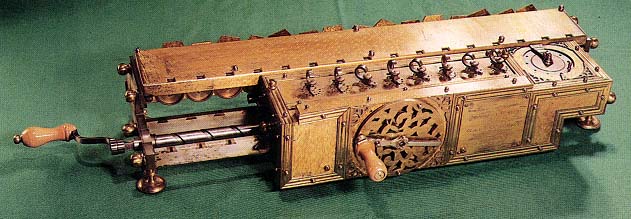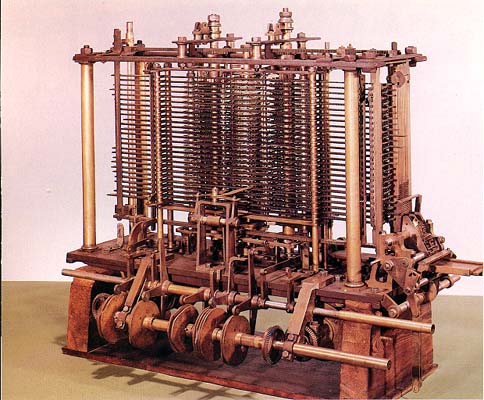HISTORY OF COMPUTER DEVELOPMENT
Computer Introduction
Computer is an amazing machine. We are living in the computer age today that most of our daily activities can't be accomplished without using one. Computer has become an indispensable and multipurpose tool for us. We are breathing in the computer age and gradually computer has become such a desire necessity of life that it is difficult to imagine life without it.
Definition
For most of the people, computer is a machine used for a calculation or a computation, but actually it is much more than that. Precisely Computer is an electronic device for performing arithmetic and logical operation. Computer is a device or a flexible machine to process data and converts it into information.
To know about the complete process that how computer works, we will have to
come across the various terms such as Data, Processing and Information. First
of all we will have to understand these terms in true sense.
1. DATA
“Data” is nothing but a mare collection of basic facts and figure without any
sequence. When the data is collected as facts and figure, it has no meaning at
that time, for example, name of student, names of employees etc.
2. PROCESSING
‘Processing’ is the set
of instruction given by the user or the related data to output the meaningful
information. Which can be used by the user? The work of processing may be the
calculation, comparisons or the decision taken by the computer.
3. INFORMATION
‘Information ’is the
end point or the final output of any processed work. When the output data is
meaning it is called information.
Development of Computer
Actually speaking electronic data
processing does not go back more than just half a centaury i.e. they are in
existence merely from early 1940’s. In early days when our ancestor used to
reside in cave the counting was a problem. Still it is stated becoming
difficult. When they started using stone to count their animals or the
possession they never knew that this day will lead to a computer of today.
People today started following a set of procedure to perform calculation with
these stones, which later led to creation of a digital counting device, which
was the predecessor the first calculating device invented, was know as ABACUS.
THE ABACUS
Abacus is known to be the first
mechanical calculating device. Which was used to be performed addition and
subtraction easily and speedily? This device was a first develop Ed by the
Egyptians in the 10th centaury B.C, but it was given it final shape in the 12th
centaury A.D. by the Chinese educationists. Abacus is made up of wooden frame
in which rod where fitted across with rounds beads sliding on the rod. It id
dividing into two parts called ‘Heaven’ and ‘Earth’. Heaven was the upper part
and Earth was the lower one. Thus any no. can be represented by placing the
beads at proper place.
NAPIER’S BONES
As the necessity demanded, scientist
started inventing better calculating device. In thus process John Napier’s of
Scotland invented a calculating device, in the year 1617 called the Napier
Bones. In the device, Napier’s used the bone rods of the counting purpose where
some no. is printed on these rods. These rods that one can do addition,
subtraction, multiplication and division easily.
PASCAL’S CALCULATOR
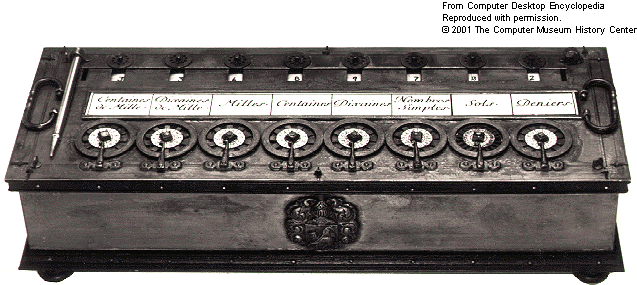
In the year 1642, Blaise Pascal a French scientist invented an adding machine called Pascal’s calculator, which represents the position of digit with the help of gears in it.
LEIBNZ CALCULATOR
In the year 1671, a German
mathematics, Gottfried Leibniz modified the Pascal calculator and he developed
a machine which could perform various calculation based on multiplication and
division as well.
ANALYTICAL ENGINE
In the year 1833, a scientist form
England knows to be Charles Babbage invented such a machine. Which could keep
our data safely? This device was called Analytical engine and it deemed the
first mechanical computer. It included such feature which is used in today’s
computer language. For this great invention of the computer, Sir Charles
Babbage is also known as the father of the computer.
GENERATION OF COMPUTER
As the time passed, the device of
more suitable and reliable machine was need which could perform our work more
quickly. During this time, in the year 1946, the first successful electronic
computer called ENIAC was developed and it was the starting point of the
current generation of computer
FIRST GENERATION
ENIAC
ENIAC was the world first successful
electronic computer which was develops by the two scientists namely J. P.
Eckert and J. W. Mauchy. It was the beginning of first generation computer. The
full form of ENIAC is “Electronic Numeric Integrated And Calculator” ENIAC was
a very huge and big computer and its weight was 30 tones. It could store only
limited or small amount of information. Initially in the first generation
computer the concept of vacuum tubes was used. A vacuum tube was such an
electronic component which had very less work efficiency and so it could not
work properly and it required a large cooling system.
SECOND GENERATION
As the development moved further,
the second generation computers knocked the door. In this generation,
transistors were used as the electronic component instead of vaccum tubes .A
transistors is much smaller in the size than that of a vaccum tube. As the size
of electrons components decreased from vaccum tube of transistor, the size of
computer also decreased and it became much smaller than that of earlier
computer.
THIRD GENERATION
Integrated circuit
The third generation computers were
invented in the year 1964. In this generation of computer, IC (Integrated
circuits) was used as the electronic component for computers. The development
of IC gave birth to a new field of microelectronics. The main advantage of IC
is not only its small size but its superior performance and reliability than
the previous circuits. It was first developed by T.S Kilby. This generation of
computer has huge storage capacity and higher calculating speed.
FOURTH GENERATION
Personal Computer
This is the generation where we are
working today. The computers which we see around us belong to the fourth
generation computers. ‘Micro processor’ is the main concept behind this
generation of computer.
A microprocessor is a single chip
(L.S.I circuit), which is used in a computer for any arithmetical or logical
functions to be performed in any program. The honaur of developing
microprocessor goes to Ted Hoff of U.S.A. He developed first micro-processor,
the Intel 4004, as he was working for Intel Corporation, U.S.A with the use of microprocessor
in the fourth generation computers, the size of computer become very fast and
efficient. It is evident that the next generation of computer i.e. fifth
generation will be developed soon. In that generation, computer will possess
artificial intelligence and it would be able to take self decisions like a
human being.
Recommendation
From the entry we will learn about the history of computer development. Currently, Malaysia is still in the develop country which is getting more improvement of technology especially in the computer technology. How ever, from this entry we will learn a few information and getting knowledge about the computer.
Sources : http://wikieducator.org/History_of_Computer_Development

